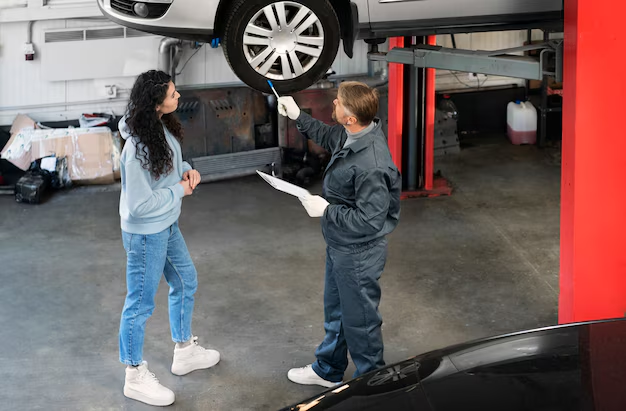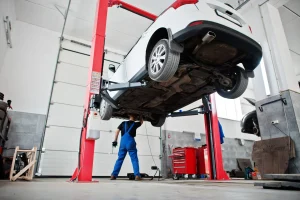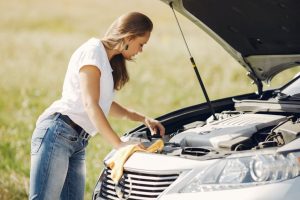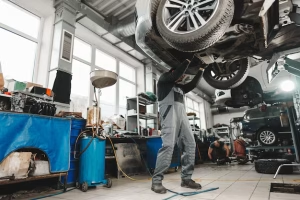Car repairs can be intimidating, especially for beginners. However, with the right knowledge, tools, and a little confidence, DIY car repair can save you a significant amount of money and give you the satisfaction of fixing problems on your own. Learning how to troubleshoot and repair common car issues is not only empowering but also a great way to maintain your vehicle for longer. In this article, we’ll walk you through the basics of DIY car repair, covering essential troubleshooting techniques and common fixes that anyone can do.
Why Learn DIY Car Repair?
There are several benefits to learning how to troubleshoot and fix your car. For starters, it allows you to save money on labor costs, which can add up quickly when visiting a mechanic. Repairing your car at home also means you can handle issues as they arise, preventing small problems from turning into costly repairs. Additionally, DIY repairs offer the satisfaction of learning something new and gaining valuable hands-on skills.
By knowing the basics of car repair, you can ensure that your vehicle runs smoothly, extend its lifespan, and avoid the stress of waiting for an appointment at the mechanic’s shop.
Basic Tools You’ll Need
Before you begin tackling car repairs, it’s essential to have the right tools. While you don’t need a full mechanic’s toolkit, a few key items are necessary to get started. Here’s a list of essential tools that every car owner should have on hand:
- Wrenches and Socket Set: These are essential for loosening and tightening bolts during most repairs.
- Screwdrivers (Flathead and Phillips): Needed for removing screws from various components in your car.
- Pliers: Useful for gripping and manipulating small parts.
- Jack and Jack Stands: These are necessary if you need to lift your car to access parts beneath it.
- Oil Drain Pan: For oil changes and any other liquid replacements.
- Torque Wrench: Ensures that bolts are tightened to the manufacturer’s specifications.
- Multimeter: Helps diagnose electrical issues like battery and alternator problems.
With these tools in your garage, you’ll be well-equipped to tackle a variety of repairs and maintenance tasks.
Troubleshooting Common Car Problems
The first step in DIY car repair is identifying the issue. Troubleshooting is a critical skill that will help you quickly determine whether you can handle the repair yourself or if you need to seek professional help. Here are a few common car problems and how to troubleshoot them:
1. Car Won’t Start
If your car won’t start, it could be due to a number of issues. Start by checking the following:
- Battery: If your car is making a clicking sound but won’t start, the battery may be dead. You can test the battery with a multimeter. If the voltage is low, try jump-starting the car or replacing the battery.
- Starter Motor: If you don’t hear any sound when you try to start the car, the starter motor might be faulty. In this case, replacing the starter motor is usually necessary.
- Ignition System: Check the ignition switch and components like the spark plugs. Worn-out spark plugs can prevent the engine from starting.
2. Engine Overheating
If your engine is overheating, it’s essential to address the issue quickly to avoid serious damage. Here are a few things to check:
- Coolant Levels: Check the radiator and coolant levels. Low coolant can cause the engine to overheat. If the coolant level is low, top it up with the correct type of coolant.
- Radiator: Inspect the radiator for leaks or blockages. If the radiator is clogged or damaged, it may need to be flushed or replaced.
- Thermostat: A malfunctioning thermostat can prevent the coolant from circulating properly, leading to overheating. If necessary, replace the thermostat.
3. Unusual Noises While Driving
Hearing strange noises while driving can be concerning, but many times, the issue is something that can be fixed yourself. Common causes of unusual noises include:
- Squealing Brakes: If you hear a squealing noise when applying the brakes, the brake pads may be worn down. Replacing the brake pads is usually an easy fix.
- Grinding or Clunking Noises: Grinding or clunking sounds can indicate problems with the suspension, wheel bearings, or transmission. Inspect the components for wear and tear, and replace them as needed.
- Hissing Noises: A hissing sound could indicate a vacuum leak or a coolant leak. Inspect hoses and the radiator for any visible damage.
4. Poor Fuel Economy
If your car’s fuel efficiency is worse than usual, it could be due to a number of factors. Here’s how to troubleshoot:
- Air Filter: A clogged air filter can reduce fuel efficiency by restricting airflow to the engine. Replacing the air filter is an easy fix that can improve fuel economy.
- Tire Pressure: Underinflated tires cause increased rolling resistance, which can reduce fuel efficiency. Check the tire pressure and inflate them to the manufacturer’s recommended level.
- Fuel Injectors: Dirty or malfunctioning fuel injectors can lead to poor fuel economy. Using a fuel injector cleaner or having the injectors cleaned can help restore fuel efficiency.
Simple DIY Car Repairs You Can Do Yourself
Once you’ve identified the issue with your car, you may be able to fix it yourself. Here are some common DIY repairs that can be done by most car owners with minimal experience:
1. Changing the Oil
Changing the oil is one of the most important maintenance tasks for keeping your engine in top condition. The process involves draining the old oil, replacing the oil filter, and refilling the engine with fresh oil. While this may sound daunting at first, it’s a relatively simple job that can be completed in about an hour. Regular oil changes help maintain engine health, improve performance, and increase fuel efficiency.
2. Replacing the Air Filter
The air filter helps keep debris and dirt out of the engine. If the air filter becomes clogged, it can reduce engine performance and fuel economy. Replacing the air filter is quick and easy—usually, it just requires unscrewing a cover and sliding in the new filter. Check your owner’s manual for the recommended replacement interval.
3. Changing Spark Plugs
Worn-out spark plugs can cause engine misfires, rough idling, and poor acceleration. Changing spark plugs is a simple task that involves disconnecting the spark plug wires, removing the old spark plugs with a socket wrench, and replacing them with new ones. This repair can significantly improve engine performance.
4. Replacing Wiper Blades
Wiper blades wear out over time, causing streaks and reduced visibility during rain. Replacing the wiper blades is one of the easiest DIY repairs. Simply lift the wiper arm, remove the old blade, and attach the new one. It’s a quick and affordable fix that enhances your safety in bad weather conditions.
5. Replacing Brake Pads
If you hear squealing or grinding noises when you apply the brakes, it may be time to replace the brake pads. Replacing brake pads requires removing the wheels, taking off the brake calipers, and replacing the old pads with new ones. It’s a more advanced repair, but with the right tools and instructions, it can be done at home.
When to Seek Professional Help
While many car repairs can be done at home, there are times when it’s best to seek professional help. If you’re unsure about a repair, or if the problem involves complex components like the transmission or engine, it’s wise to take your car to a mechanic. Additionally, if you don’t have the proper tools or if the repair requires specialized knowledge, it’s better to leave it to the experts.
Conclusion
Learning DIY car repair basics is a valuable skill that can save you time and money. By troubleshooting common problems and performing simple repairs, you can keep your car running smoothly for years to come. While some repairs may require more advanced knowledge or tools, many tasks—such as changing the oil, replacing the air filter, and fixing wiper blades—are easy to do at home. With the right tools, research, and patience, you’ll be able to tackle common car issues and maintain your vehicle without the need for expensive mechanic visits.



